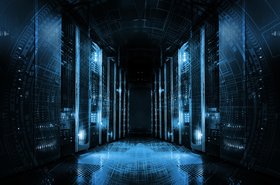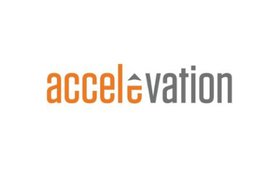Following the launch of publicly accessible generative AI (genAI) models like Midjourney and ChatGPT, interest in the economic potential of GenAI has translated into a “tsunami of AI demand,” which in turn, is driving a frenzy of data center leasing.
TD Cowen researchers estimate that, in the 90-day span between mid-May and late July, approximately 2.1GW of data center leases were signed in the US, in response to speculation over rapidly increasing AI requirements.
However, there are challenges to leasing more capacity in data centers in an industry where operators of all sizes are already struggling to meet existing demand for existing deployments.
A mixture of supply chain headwinds, stricter regulatory scrutiny, and pressure from shareholders to increase quarterly turnover is pushing hyperscale demand onto the colocation sector.
With hyperscalers increasingly looking to Tier II and Tier III colocation operators to meet their capacity needs, the great wave of GenAI demand represents another tremendous opportunity for colocation data center operators.
The generative AI explosion
It's undeniable that 2023 has already seen an industry-wide push to soak up leasing space because of GenAI. There is also a great deal of speculation about how to scale AI applications, so the data center industry is seeing a massive increase in the amount of infrastructure, in the density of that infrastructure, and in the size of deployments.
We know roughly the sort of demands that these AI applications can place upon a data center, and we know that this technology has the potential to have a massive impact on the economy at large.
However, while the building of something like a cloud environment has more or less been turned into an exact science over the past decade, AI data center architectures are often untrodden and unmapped territory, with some of the world’s leading GPU providers questioning if the industry is ready for the AI boom.
Data center environments designed to meet the requirements of generative AI deployments look and behave differently than those designed to house cloud workloads, and the exact nature of these workloads is, in some respects, still also unknown.
GenAI represents a new source of demand for power, space, cooling, and capacity which could in time rival or even eclipse the cloud, currently the biggest driver of demand for data centers. Figuring out exactly how that's going to reshape the data center sector, and how companies can preempt this trend without being underprepared or overcommitted, is a tricky problem to solve.
How to ensure your colocation business is ready for the GenAI boom
While the new wave of demand for data center capacity to support GenAI deployments represents a significant opportunity for colocation data center operators, the scale, pace, and specifics of this trend also make capitalizing on it a challenging prospect.
In order to be successful in responding to this new demand wave, organizations will need to demonstrate significant modernization, creativity, speed, and collaboration.
Modernize
Most Tier II and Tier III data centers, arguably even some in Tier I environments, aren’t fit to accommodate the next phase of generative AI models. As such, it’s vital to partner with organizations who know and understand the technology and can help you fast-track your modernization project to meet demanding time and budgetary requirements.
This includes being able to design and retrofit legacy facilities to incorporate high-density air-cooled, or direct-to-chip (D2C) liquid cooling architectures, and to do so with seamless predictability so that designs, where are applicable, can be replicated or scaled.
Be creative
Be creative with your infrastructure, with your suppliers, and be creative with the way that you do things because the old methods just won't work as well as they used to.
GenAI is a profoundly impactful technology and, just as it is going to create new ways of doing things, just as we have to modernize, the data center industry will also have to come up with new ways of supporting it.
The traditional data center sale cycle isn't going to be applicable if owners or operators want to capitalize on the rise of generative AI or meet hyperscale demand, they will need to be prepared to source all of the things necessary for an AI application infrastructure build and have to do it with partners that they trust, and at a speed that's relatively unheard of in the market. If you can do that, then you’ll have a chance of capitalizing on these opportunities.
Be fast
Everyone is trying to figure out the answers to the same questions at the same time. We’re all trying to crack the code of how to meet this incredible demand, attract more tenants, and do so with enough flexibility to cater effectively to multiple AI applications – whatever shape they may take.
Right now, the biggest differentiator is having available space that’s engineered for AI capabilities, but once that capacity is used up, the cycle will repeat itself, and the competition becomes about getting end users into a facility that you haven't built yet.
This is where the industry is likely to see the next big wave of innovation in terms of data center design and business strategy.
The colocation providers who can start enticing tenants into the next generation of AI-ready facilities, be it through modernization, speed, or creativity, will be the ones who capture the lion’s share of the demand wave.
Be collaborative
Collaboration within the supplier ecosystem is vital, and the most important distinction between companies that will attract the next wave of GenAI infrastructure business and those who don’t.
Siloed suppliers of power, cooling, caging, etc. who continue to approach the process from a vendor-supplier productized perspective are going to be far less effective than those who collaborate within their ecosystem and take a more partnership-focused approach.
While the long-term impact of GenAI on our planet, the US economy, and the data center sector remains undefined, the jump in demand that operators are seeing now is very much real.
The last 90 days have seen the biggest injection of investment into the data center sector since the birth of the cloud, and the rest of 2023 will be pivotal as major industry players position themselves to enter a GenAI-defined future.
With the right approach and partners, the GenAI era represents a generational opportunity for data center operators ready to be creative, collaborative, and quick.
More...
-

Sponsored AI ‘gold rush’ changing data center design
Boom in demand for facilities optimized for artificial intelligence is causing a rethink in data center design, including a shift to modular roll-outs, says Instor’s Sam Prudhomme
-

Accelevation Holdings forms data center-focused business unit
New unit to be made up of the recent acquisitions Instor Solutions and Conatech
-

Accelevation buys data center equipment integrator Instor
Financial terms of the deal were not shared


